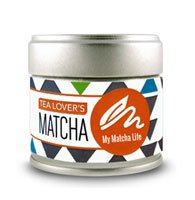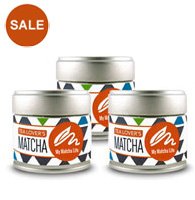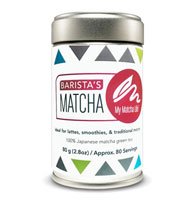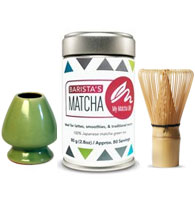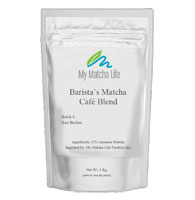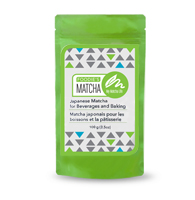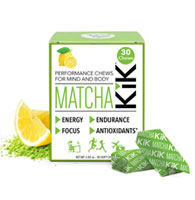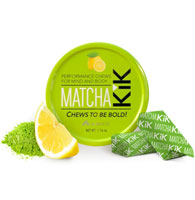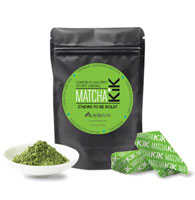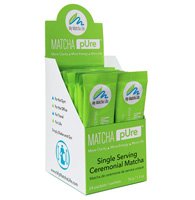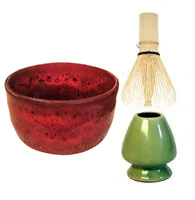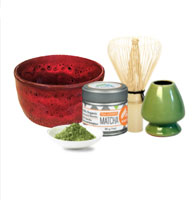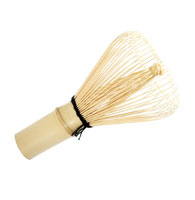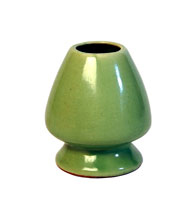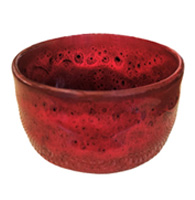 Matcha Tea
Matcha Tea
Tea Lover’s Organic Ceremonial Matcha
Tea Lover’s Organic Ceremonial Matcha Tea is certified organic and blended exclusively for My Matcha Life® providing a rich complexity with a fresh, smooth finish and loaded with the mentally calming amino acid L-theanine. Try it today! Ingredients: 100% Organic Japanese matcha green tea. [ 1oz/30g tin ]
USD $31.49Add to cart
Tea Lover’s Organic Ceremonial Triple Bundle
Save 10% and get FREE shipping when you order three (3) tins of our finest certified Tea Lover’s Organic Ceremonial Matcha. Ingredients: 100% Organic Japanese matcha green tea. [ 1oz/30g tin ]
Original price was: USD $94.47.USD $85.02Current price is: USD $85.02.Add to cart
Barista’s Matcha Tea
Barista’s Matcha tea is perfect for those who enjoy the matcha experience but don’t want to pay a premium price. Drink Barista’s Matcha on its own or add it to your lattes, smoothies and blender drinks. Ingredients: 100% Japanese matcha green tea. [ 2.8oz/80g tin ]
USD $34.99Add to cart
Barista’s Triple Bundle
Save 10% and get FREE shipping when you buy 3 tins of our popular Barista’s matcha tea. With exceptional taste and affordability, Barista’s brings new energy to even hectic lifestyles. Ingredients: 100% Japanese matcha tea. [ 2.8oz/80g tin ]
Original price was: USD $104.97.USD $94.47Current price is: USD $94.47.Add to cart
Barista’s Starter Kit
Save $$. This super convenient bundle includes a bamboo Matcha Whisk + Whisk Holder + 1 tin of our 100% pure Japanese Barista’s Matcha plus FREE shipping. A delicious matcha with a bold flavor. Great for lattes, smoothies and your daily matcha tea. Makes a great gift too. [ 2.8oz/80g tin ]
Original price was: USD $67.97.USD $61.17Current price is: USD $61.17.Add to cart
Barista’s Matcha Café Blend
Save $200 buying in bulk. Barista’s Matcha Café Blend is the same great matcha tea as our regular Barista’s matcha. This big 2.2 pound bag is designed for coffee bars, office staff or any matcha enthusiast looking for an amazing price! Ingredients: 100% Japanese matcha green tea. [ 2.2lb/1kg bag ]
USD $199.00Add to cart
Foodie‘s Matcha Tea
Foodies Matcha tea is for the Foodie in all of us. Chosen for its bright green color and strong matcha tea taste, Foodies’ Matcha adds a healthy factor to your culinary delights. And when you’re finished creating in the kitchen, relax with a steaming matcha latte. Ingredients: 100% Japanese matcha tea. [ 3.5oz/100g bag ]
USD $25.99Add to cart
Matcha KiK Performance Chews 30 pk
KiK your busy day or game into high gear with lemon flavored Matcha KiK Performance Energy Chews. Use 1/2 to 1 KiK for sustained mental focus, energy, endurance, or anytime you need to be at the top of your game. [ 30 chews/box ]
USD $26.99Add to cart
Matcha KiK Performance Chews 6 pk (USA Only)
KiK your busy day or game into high gear with lemon flavored Matcha KiK Performance Energy Chews. Use 1/2 to 1 KiK for sustained mental focus, energy, endurance, or anytime you need to be at the top of your game. [ 6 chews/tin ]
USD $5.99Read more
Matcha KiK 2 Pk
Matcha KiK 2 Pk is an ideal introduction to our zesty Matcha KiKs. This convenient re-sealable pouch contains two (2) Matcha KiK soft chews. It’s also an excellent shopping cart add-on to qualify for free shipping. [ 2 chews/pouch ]
USD $1.99Add to cart
Matcha Packets 24
Matcha Packets are super convenient single packets of energy, focus and powerful antioxidants. A quick and affordable introduction to matcha. Shake it up cold or mix it hot. Great taste, no bitterness. Each packet contains 1.5 grams of ceremonial grade Japanese matcha tea.
USD $42.99Add to cart
Matcha Packets 10
Matcha Packets are super convenient single packets of energy, focus and powerful antioxidants. A quick and affordable introduction to matcha. Shake it up cold or mix it hot. Great taste, no bitterness. Each packet contains 1.5 grams of ceremonial grade Japanese matcha tea.
USD $19.99Add to cart
Matcha Accessories Bundle
Save $$. Our Matcha Accessories Bundle gives you all the tools you need to make the perfect cup of matcha tea including our hand-made Bamboo Whisk, Whisk Holder and traditional Matcha Bowl. Together they make every cup of matcha fast, easy and fun. Perfect for you or as a gift.
Original price was: USD $68.97.USD $62.07Current price is: USD $62.07.Add to cart
Tea Lover’s Matcha Tea Set
The Tea Lover’s Matcha Tea Set comes bundled with our delicious 100% pure organic ceremonial grade Japanese matcha tea; plus the long-lasting 80-frond hand-made bamboo whisk carefully crafted from bamboo; and also a Whisk Holder, the perfect tool to extend the life and shape of your whisk; and finally the Japanese Matcha Bowl, perfect for vigorous whisking.
Original price was: USD $100.46.USD $90.41Current price is: USD $90.41.Add to cart
Bamboo Whisk
Yes, you can use an espresso frother to whisk your matcha tea, but it’s not very Zen-like! Why not treat yourself to a Matcha Bamboo Whisk (we know you’re worth it), then round out your matcha green tea experience with a Traditional Matcha Bowl and a Whisk Holder (a very useful item). You’ll be glad you did.
USD $19.99Add to cart
Whisk Holder
The Matcha Whisk Holder is the perfect partner for your matcha whisk. Its sole purpose is to increase your whisk’s longevity by helping to retain its shape and its sturdiness; both important for a satisfying froth.
USD $12.99Add to cart
Matcha Bowl
The traditional matcha bowl adds to your matcha green tea experience. Made in Japan from lead free ceramics it is narrow enough to hold the heat in, yet wide enough for vigorous whisking. Makes a great gift for yourself or for the matcha tea lover in your life.
USD $35.99Add to cart
